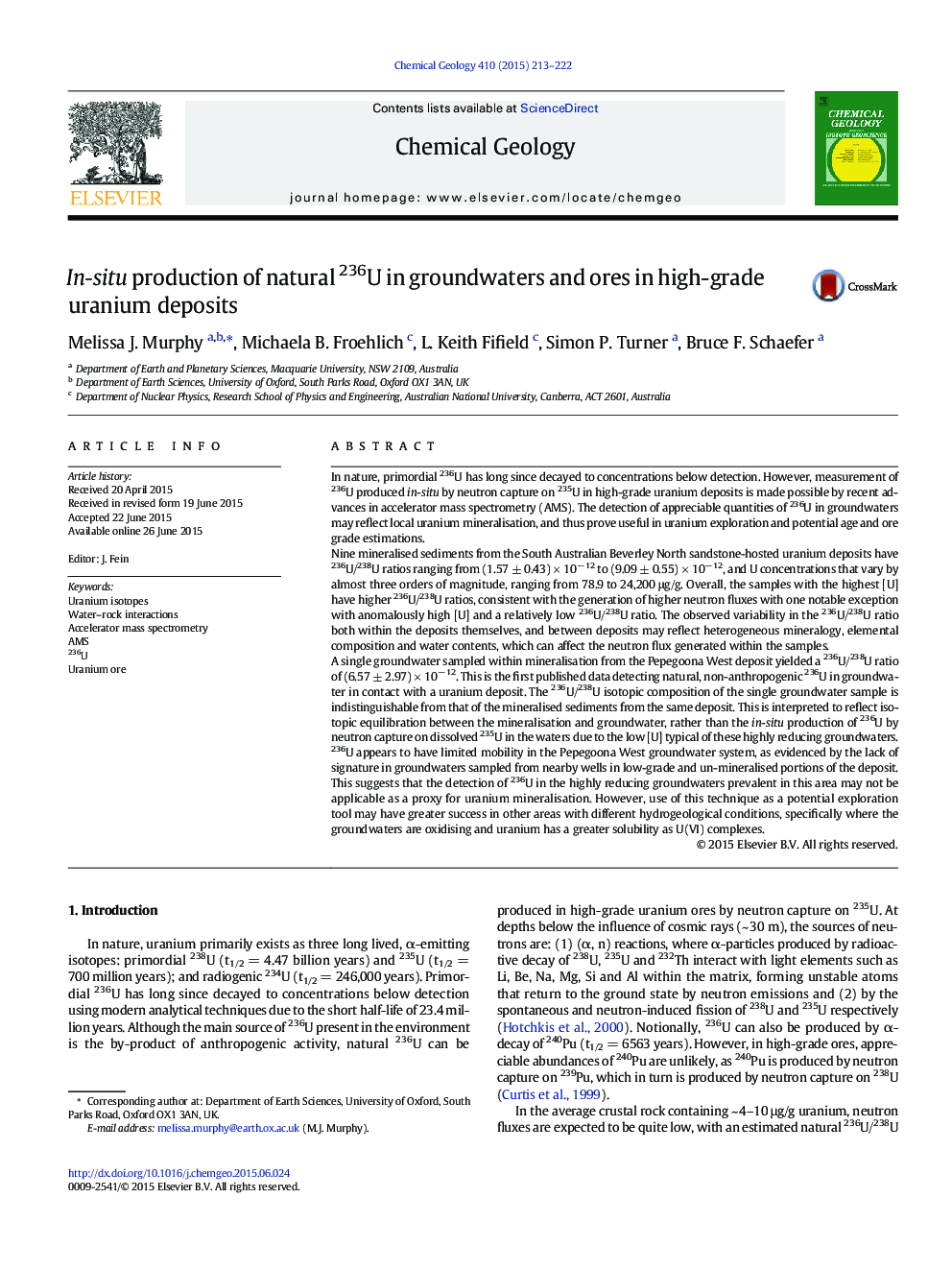| کد مقاله | کد نشریه | سال انتشار | مقاله انگلیسی | نسخه تمام متن |
|---|---|---|---|---|
| 4698496 | 1637564 | 2015 | 10 صفحه PDF | دانلود رایگان |

• First reported measurement of natural 236U in groundwater in contact with a uranium deposit
• The 236U/238U composition of the groundwater sample indistinguishable from uranium mineralised sediments
• The groundwater signature reflects the isotopic equilibration of 236U during water–rock interaction.
In nature, primordial 236U has long since decayed to concentrations below detection. However, measurement of 236U produced in-situ by neutron capture on 235U in high-grade uranium deposits is made possible by recent advances in accelerator mass spectrometry (AMS). The detection of appreciable quantities of 236U in groundwaters may reflect local uranium mineralisation, and thus prove useful in uranium exploration and potential age and ore grade estimations.Nine mineralised sediments from the South Australian Beverley North sandstone-hosted uranium deposits have 236U/238U ratios ranging from (1.57 ± 0.43) × 10− 12 to (9.09 ± 0.55) × 10− 12, and U concentrations that vary by almost three orders of magnitude, ranging from 78.9 to 24,200 μg/g. Overall, the samples with the highest [U] have higher 236U/238U ratios, consistent with the generation of higher neutron fluxes with one notable exception with anomalously high [U] and a relatively low 236U/238U ratio. The observed variability in the 236U/238U ratio both within the deposits themselves, and between deposits may reflect heterogeneous mineralogy, elemental composition and water contents, which can affect the neutron flux generated within the samples.A single groundwater sampled within mineralisation from the Pepegoona West deposit yielded a 236U/238U ratio of (6.57 ± 2.97) × 10− 12. This is the first published data detecting natural, non-anthropogenic 236U in groundwater in contact with a uranium deposit. The 236U/238U isotopic composition of the single groundwater sample is indistinguishable from that of the mineralised sediments from the same deposit. This is interpreted to reflect isotopic equilibration between the mineralisation and groundwater, rather than the in-situ production of 236U by neutron capture on dissolved 235U in the waters due to the low [U] typical of these highly reducing groundwaters.236U appears to have limited mobility in the Pepegoona West groundwater system, as evidenced by the lack of signature in groundwaters sampled from nearby wells in low-grade and un-mineralised portions of the deposit. This suggests that the detection of 236U in the highly reducing groundwaters prevalent in this area may not be applicable as a proxy for uranium mineralisation. However, use of this technique as a potential exploration tool may have greater success in other areas with different hydrogeological conditions, specifically where the groundwaters are oxidising and uranium has a greater solubility as U(VI) complexes.
Journal: Chemical Geology - Volume 410, 2 September 2015, Pages 213–222